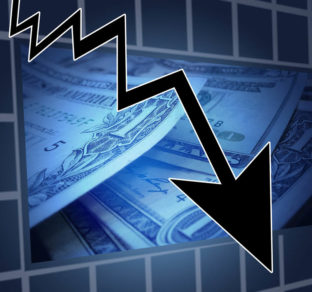CONTACT US
Cadent Capital Advisors, LLC
Phone: (918) 935-3450
Fax: (918) 779-0005
Email: Contact@cadcapital.com
4525 East 91st Street
Tulsa, OK 74137


Your idea of retirement is probably much different from that of your parents. Your saving strategy should be too. By starting now and taking an active role in planning, you can positively impact your future.
As a team we have over 100 years of combined investment experience and have successfully managed assets through some of the most difficult times in history. At Cadent Capital, our commitment is to provide communication throughout the entire investment process. From initially meeting to gather data and implement the individualized strategy to reviewing portfolio performance against goals and adjusting as needed, we help our clients meet their financial and lifestyle goals while making sure we are consistently communicating.

At Cadent, we are dedicated to client success. We provide simple solutions to complex financial matters and partner with clients to follow a disciplined, consistent process.

With over 100 years of business and industry knowledge, clients benefit from our disciplined asset management approach and delivery of unbiased recommendations to meet client goals.

What is important to you is important to us. We pride ourselves at keeping your information only yours.

As an independent firm, client interests are at the forefront of the advice we give. We listen to clients to help execute financial plans unique to each client with objectivity and embracing each clients personal and emotional needs.
At Cadent Capital Advisors, we champion the higher trustee responsibility that comes with being an independent advisory firm. We align our intent with yours while working within a compensation model that corroborates we act in your best interests at all times.

The intricacies of reaching your lifestyle goals before and after retirement are always challenging and often complex. We specialize in Investment policy statements based on risk tolerance and goals. Our comprehensive financial planning will provide you with a clear understanding of every aspect of your strategic asset allocation including active and we provide continuous portfolio monitoring.
Investment consulting enables us to optimize your path towards achieving your goals. This allows you to spend more time on the things you care about most.
We embrace our role as your chief financial officer, ensuring each of our clients is educated on planning, implementation, and monitoring and we provide multigenerational family wealth education.

We provide a comprehensive financial planning With your retirement in mind. With cash flow analysis and integration of all assets including employer plans, stock options, restricted stocks, annuities, and alternative assets we can improve your saving for when the time comes to retire.l

Active and on-going tax management and minimization with cost basis tracking for all assets allows us to get you more bang for your buck. Contact us to find out more.

Getting older and planning for your families future is important to us. Active and ongoing estate tax mitigation strategies helps this process to be most efficient it retrospect to your future and your families future. We review of estate and trust documents providing cash flow analysis and flow chart coordination with estate attorneys to develop, to implement and monitor your estate plan.



The crosscurrents of strong corporate earnings, rising global cases of COVID-19, and the specter of higher capital gains taxes led to a choppy week of trading that left stock prices slightly lower for the week. The Dow Jones Industrial Average lost 0.46%, while the Standard & Poor’s 500 slipped 0.13%. The Nasdaq Composite index fell 0.25% for the week. The MSCI EAFE index, which tracks developed overseas stock markets, dropped 0.47%

Stocks retreated last week on rising COVID-19 infections and slow progress on an economic relief bill. The Dow Jones Industrial Average dipped 0.57%, while the Standard & Poor's 500 dropped 0.96%. The Nasdaq Composite index fell 0.69% for the week. The MSCI EAFE index, which tracks developed overseas stock markets, declined 0.05%

Despite news of another COVID-19 vaccine candidate, stocks were mixed amid investor anxiety over an increase in new infections and economic lockdowns. The Dow Jones Industrial Average fell 0.73%, while the Standard & Poor's 500 declined 0.77%. The Nasdaq Composite index rose 0.22% for the week. The MSCI EAFE index, which tracks developed overseas stock markets, gained 1.42%

Stock prices dropped last week as hopes for a fiscal stimulus bill faded and investors focused on rising COVID-19 infections, here and abroad. The Dow Jones Industrial Average slid 6.47%, while the Standard & Poor's 500 tumbled 5.64%. The Nasdaq Composite index lost 5.51% for the week. The MSCI EAFE index, which tracks developed overseas stock markets, slumped 5.02%

Stocks slipped as the technology sector remained under pressure and a mid-week announcement by the Federal Reserve failed to inspire investors. The Dow Jones Industrial Average declined 0.03%, while the Standard & Poor's 500 fell 0.64%. The Nasdaq Composite index dropped 0.56% for the week. The MSCI EAFE index, which tracks developed overseas stock markets, rose 0.75%

Stocks traveled a volatile path last week as investors appeared concerned about the upcoming elections, an uncertain economy, and more delays with additional fiscal stimulus. The Dow Jones Industrial Average slid 1.66%, while the Standard & Poor's 500 slumped 2.51%. The Nasdaq Composite index plummeted 4.06% for the week. The MSCI EAFE index, which tracks developed overseas stock markets, rose 1.44%

A late week sell-off sent stocks broadly lower as investors took some profits after stocks reached all-time highs earlier in the week. The Dow Jones Industrial Average slid 1.82%, while the Standard & Poor's 500 slumped 2.31%. The Nasdaq Composite index dropped 3.27% for the week. The MSCI EAFE index, which tracks developed overseas stock markets, fell 0.62%

Stocks advanced relentlessly last week on positive COVID-19 developments, encouraging economic data, and a supportive policy shift in the Fed's approach to its target inflation rate.

Overlooking stalled efforts by Congress to pass a new fiscal stimulus bill, stocks marched higher last week with the Dow Jones Industrials leading the way and the NASDAQ Composite setting multiple fresh record highs. The Dow Jones Industrial Average gained 3.80%, while the Standard & Poor's 500 rose by 2.45%. The Nasdaq Composite index climbed 2.47% for the week. The MSCI EAFE index, which tracks developed overseas stock markets, advanced 2.31%

Stocks slipped in the final days of trading last week on higher jobless claims and rising tensions in the U.S.-China relationship. The Dow Jones Industrial Average lost 0.76%, while the Standard & Poor's 500 dipped 0.28%. The Nasdaq Composite Index dropped 1.33% for the week. The MSCI EAFE Index, which tracks developed stock markets overseas, rose 1.24%

In a holiday-shortened week, stock prices turned higher as encouraging economic data outweighed an increase in COVID-19 cases and a rollback in economic re-openings. The Dow Jones Industrial Average rose 3.25%, while the Standard & Poor's 500 increased by 4.02%. The Nasdaq Composite Index gained 4.62% for the week. The MSCI EAFE Index, which tracks developed stock markets overseas, picked up 0.22%

Investor sentiment turned negative last week, amid an increasing number of COVID-19 cases in states where reopening has been underway as well as a subdued economic forecast from the Federal Reserve.

A positive jobs report sent stocks soaring last Friday, capping a solid week as evidence of a global economic recovery outweighed concerns over civil unrest and tensions with China.

The shortened week, which began with a powerful two-day rally of trading, was enough to drive the markets into another week of solid gains. The Dow Jones Industrial Average rose 3.75%, while the Standard & Poor's 500 advanced 3.01%. The Nasdaq Composite Index climbed 1.77% for the week. The MSCI EAFE Index, which tracks developed stock markets overseas, gained 6.18%.

Stocks drifted lower last week, weighed down by Federal Reserve Chairman Jerome Powell's unsettling comments on the economy and signs of renewed tensions with China. The Dow Jones Industrial Average fell 2.65%, while the Standard & Poor's 500 retreated 2.26%. The Nasdaq Composite Index slipped 1.17% for the week. The MSCI EAFE Index, which tracks developed stock markets overseas, slid 3.66%

Stock prices ended the week slightly lower, despite news of positive results from a test trial of a COVID-19 drug treatment and several states easing their economic lock-downs. The Dow Jones Industrial Average slipped 0.22%, while the Standard & Poor's 500 lost 0.21%. The Nasdaq Composite Index dropped 0.34%. The MSCI EAFE Index, which tracks developed stock markets overseas, rose 4.34%

Stock prices bounced around last week as investors reacted to wild swings in the price of oil and reports that called into question the efficacy of two potential virus treatments. The Dow Jones Industrial Average retreated 1.93%, while the Standard & Poor's 500 lost 1.32%. The Nasdaq Composite Index slipped 0.18%. The MSCI EAFE Index, which tracks developed overseas stock markets, declined 1.21%

Stock prices pushed higher last week as news of a White House plan to reopen the economy and reports of a potential COVID-19 treatment helped the market overcome weak economic data and an ugly start to the corporate earnings season.

Modest declines in stock prices this week masked the volatile inter- and intraday price swings as investors digested poor economic data and a warning from the president that the worst days of the COVID-19 pandemic may still lie ahead. The Dow Jones Industrial Average slipped 2.70%, while the Standard & Poor's 500 dropped 2.08%. The Nasdaq Composite Index declined 1.72%. The MSCI EAFE Index, which tracks developed overseas stock markets, slid 2.76%.

An open-ended commitment by the Federal Reserve to support American businesses and capital markets along with the passage of a $2 trillion aid package improved investor sentiment and drove a strong rally in stock prices.

The stock market suffered through another volatile week as it wrestled with the health and economic fallout of the domestic spread of the coronavirus. Swift and decisive actions by the Federal Reserve and policy responses from the federal government did not keep stocks from recording losses for the week

Stocks fell sharply last week as Wall Street considered how the coronavirus outbreak might influence global business activity and household spending. The selloff became a correction for the U.S. markets. The S&P 500 retreated 11.49%; the Dow Jones Industrial Average, 12.36%; the Nasdaq Composite, 10.54%. The MSCI EAFE, tracking developed stock markets outside North America, had fallen 6.75% week-over-week by Friday's closing bell.

This Week on Wall Street Traders paid close attention to coronavirus developments and earnings last week, while wondering how the former might eventually impact the latter. Concern over updated infection numbers moderated risk appetite.

Daily headlines about the coronavirus had little impact on stock market averages last week. Earnings and mergers had more influence. All three Wall Street benchmarks improved. The Nasdaq Composite rose 2.21%, outpacing the S&P 500, up 1.58%, and the Dow Jones Industrial Average, up 1.02%. The MSCI EAFE index, which tracks developed overseas equity markets, added 0.17%


Stock benchmarks declined for a second straight week as coronavirus news tempered risk appetite. The S&P 500 fell 2.14% on the week. The Nasdaq Composite dipped 1.76%, and the Dow Jones Industrial Average, 2.55%. Away from North America, developed markets slumped 2.24%, according to MSCI's EAFE index

The market had a choppy five days, with traders reacting to geopolitical developments and weaker-than-expected jobs data. Even so, the three major U.S. equity indices posted weekly gains and continued their strong start to the new year. During Friday's trading session, the Dow Jones Industrial Average topped 29,000 for the first time.

The U.S. and China announced a limited trade agreement last week. That news lifted U.S. and foreign stocks, leading to weekly gains. Advancing 0.91% on the week, the Nasdaq Composite outperformed the S&P 500 (up 0.73%) and Dow Jones Industrial Average (up 0.43%). The MSCI EAFE index, measuring the performance of developed markets overseas, improved 0.42%

Stocks declined last week as mixed signals emerged about the progress of U.S.-China trade negotiations. The three major Wall Street benchmarks all took weekly losses. The Dow Jones Industrial Average declined 0.46%; the S&P 500, 0.33%, the Nasdaq Composite, 0.25%. Also pulling back, the MSCI EAFE index, tracking developed stock markets outside the U.S. and Canada, retreated 0.69%

The Week on Wall Street A better-than-forecast jobs report prompted a stock market rally Friday, two days after traders witnessed another interest rate cut by the Federal Reserve. Both the S&P 500 and Nasdaq Composite ended the week at historic peaks, while the Dow Jones Industrial Average settled less than 12 points under its all-time record close. The Nasdaq rose 1.74% for the week; the S&P gained 1.47%. The Dow added 1.44%. MSCI's EAFE benchmark, which measures developed stock market performance outside the U.S. and Canada, improved 0.58%. , ,

The S&P 500 came within 0.1% of a record close Friday. Stocks were lifted last week by positive news on U.S.-China trade negotiations, plus earnings announcements. The Nasdaq Composite posted the largest weekly gain of the three major U.S. stock indices. It rose 1.90%. Last week also brought gains of 0.70% for the Dow Jones Industrial Average and 1.22% for the S&P. The MSCI EAFE, a benchmark for developed stock markets outside the U.S., rose 1.14%

The fourth quarter started with a mixed week for equities. The Dow Jones Industrial Average lost 0.92% for the week; the S&P 500, 0.33%. In contrast, the Nasdaq Composite improved 0.54%. Overseas stocks pulled back: the MSCI EAFE index dipped 2.60%

We hope you enjoy this issue of our quarterly newsletter, and we wish you an autumn full of warmth, beauty, and all the finest flavors this special time of year has to offer. Thank you for letting Cadent Capital be part of your life, through every changing season.

Stocks rose last week, with help from two developments: the announcement of further U.S.-China trade talks as well as August hiring and manufacturing numbers that seemed to bolster the argument for a rate cut by the Federal Reserve

Traders assumed that the week's biggest news event would be Federal Reserve Chairman Jerome Powell's speech at the annual Jackson Hole banking conference. Instead, China seized the headlines by announcing new tariffs on U.S. goods. Domestic stocks ended up lower for the week. The Nasdaq Composite fell 1.83%; the S&P 500, 1.44%; the Dow Jones Industrial Average, 0.99%. International stocks posted a weekly gain: the MSCI EAFE benchmark rose 0.96%

U.S. stock indices saw significant ups and downs last week, with traders looking for economic cues from Treasury yields and also developments in the tariff fight between the U.S. and China. The S&P 500 lost 1.03% on the week; the Dow Jones Industrial Average and Nasdaq Composite respectively declined 1.53% and 0.79%. Overseas shares also retreated: the MSCI EAFE index lost 2.34%

Stocks spent much of last week rebounding from a Monday drop that reflected nervousness about the U.S.-China trade fight. By Thursday's closing bell, the S&P 500 had regained all its Monday losses – but it descended again on Friday

Last week, the Federal Reserve cut interest rates for the first time in more than a decade, in line with Wall Street's expectations. Ironically, stocks had their worst week of 2019. The S&P 500 finished the week 3.10% lower. The Dow Jones Industrial Average and the Nasdaq Composite also posted weekly losses; the blue chips fell 2.60%, while the premier tech benchmark slumped 3.92%. International stocks tracked by MSCI's EAFE index dipped 1.06%.

Last week, investors assessed earnings and the initial estimate of second-quarter economic growth, while awaiting the Federal Reserve's next announcement about interest rates. Stocks rose for the week; particularly, tech shares. The S&P 500 gained 1.65%; the Nasdaq Composite, 2.26%. The Dow Jones Industrial Average lagged, adding just 0.14%. MSCI's EAFE index, a gauge of equity performance in developed foreign markets, ticked up 0.01%

Stock benchmarks retreated during the first week of the second-quarter earnings season. As some big names shared quarterly results, investors seemed more interested in what might happen at the Federal Reserve's upcoming policy meeting

Friday, the S&P 500 settled above 3,000 for the first time, after rising 0.78% for the week. The Dow Jones Industrial Average chalked up a milestone of its own: the blue chips ended the week above 27,000, gaining 1.52% on the way. Additionally, the Nasdaq Composite wrapped up the week 1.01% higher. The MSCI EAFE index, a gauge of overseas developed markets, fell 0.65%

U.S. stock benchmarks opened a new quarter positively. The S&P 500 gained 1.65% in the opening week of July; the Dow Jones Industrial Average, 1.21%; the Nasdaq Composite, 1.94%. Overseas, stocks in developed markets, tracked by MSCI's EAFE index, rose 1.43%

Our Summer On Wealth newsletter has arrived! This issue includes articles about going green with solar energy, investigating if the purchase an RV for traveling fits you, plus how to make a marvelous Sangria. Most importantly, we include an article on evaluating when you should retire. We're happy to talk with you further to review your planning for this big event as well.

The S&P 500 hit an all-time peak of 2,964.03, in intraday trading Friday, while improving 2.20% across five market days. The Dow Jones Industrial Average and Nasdaq Composite posted respective, 5-day advances of 2.41% and 3.01%. In addition, the MSCI EAFE benchmark of overseas stocks rose 2.58%.

Stocks advanced for a second straight week. The S&P 500 benchmark rose 0.47%; the Nasdaq Composite, 0.70%; the Dow Jones Industrial Average, 0.41%. Overseas shares, as tracked by the MSCI EAFE developed markets index, added 0.20% The market seemed to put its recent preoccupation with trade issues aside, with attention shifting to this week's Federal Reserve monetary policy meeting. Traders in futures markets now believe the Fed will make a rate cut in July, so its June policy statement will be of great interest.

Stocks rallied during a week in which Wall Street was buffeted by headlines. The S&P 500 rose 4.41%. The Nasdaq Composite and Dow Jones Industrial Average respectively added 3.88% and 4.71%. The MSCI EAFE index of overseas stocks improved 2.02% across five days.

Stocks struggled during a 4-day market week as the U.S.-China trade standoff continued to weigh on the minds of market participants. From the Friday, May 24 close to the Friday, May 31 close, the S&P 500 retreated 2.62%; the Nasdaq Composite, 2.41%; the Dow Jones Industrial Average, 3.01%. The MSCI EAFE index of overseas stocks dipped just 1.47% in a week.

Stocks drifted lower last week as investors considered the possibility that the world's two largest economies might take some time to resolve key trade issues. The S&P 500 retreated 1.17%; the Nasdaq Composite, 2.29%; the Dow Jones Industrial Average, 0.69%. The concern over trade was felt elsewhere: the overseas developed markets benchmark, the MSCI EAFE, also lost 1.41% in five sessions

Stocks fell sharply at the start of last week over trade tensions, then recovered with help from strong earnings and indications that U.S.-China trade talks would continue.

As we noted recently, Wall Street has a wandering eye. Last week, it focused on the new tariff threats in the ongoing U.S.-China trade dispute. Stocks fell across five trading sessions: the Dow Jones Industrial Average lost 2.12%, the S&P 500, 2.18%; the Nasdaq Composite, 3.03%. International stocks also fell: the MSCI EAFE index declined 3.06%.

Stocks were up and down last week, and the three major benchmarks ended up little changed after five trading days. The S&P 500 rose 0.20% for the week; the Nasdaq Composite, 0.22%. The Dow Jones Industrial Average declined 0.14%. The MSCI EAFE index, a benchmark for international stocks, declined 0.21%

Stocks returned to record territory, with both the S&P 500 and the Nasdaq Composite closing at historic highs. The S&P gained 1.20% for the week; the Nasdaq, 1.85%. The Dow Jones Industrial Average lagged, losing 0.06%. The MSCI EAFE index of international stocks lost 0.52%. The S&P took only 17 weeks to fully rebound from its December low.

The Week on Wall Street A short and relatively placid trading week wrapped up Thursday, with the major indices turning in mixed performances. The S&P 500 retreated 0.08%, the Nasdaq Composite advanced 0.17%, and the Dow Jones Industrial Average gained 0.56%. The MSCI EAFE index, tracking foreign stocks in developed countries, added 0.65%. Nothing really catalytic emerged to drive the market last week, and volumes were low.

Stocks broke out of a narrow range on Friday following news that two major banks grew their bottom line in the first quarter. For the week, the S&P 500 rose 0.79%; the Nasdaq Composite, 0.91%. The Dow Jones Industrial Average improved 0.50%. Turning to overseas stocks, the MSCI EAFE index declined 0.09%.

Stocks just posted their second straight weekly gain. Investors were encouraged by the latest jobs report and new signs of progress on a U.S.-China trade deal. The Dow Jones Industrial Average advanced 1.17% in five trading days; the S&P 500, 1.27%; the Nasdaq Composite, 1.72%. The MSCI EAFE index of international stocks improved 1.84%.

In this issue of the On Wealth newsletter you'll find articles on how to travel on a retirement budget, spring clean your finances, and top for a transition to assisted living accommodations. We hope you will enjoy this issue and share with friends too!

Friday, the yield of the 3-month Treasury bill exceeded the yield of the 10-year Treasury note for the first time in 12 years. For some analysts, this “inverted yield curve†may imply a short-term lessening of confidence. (Treasury yields move inversely to Treasury prices)

The big story last week was the sudden grounding of Boeing 737 Max 8 and 9 passenger jets in dozens of countries. The financial effects of this ban could potentially impact the airline industry and segments of the economy for months. While the news created a headwind for the Dow Industrials, stocks managed to post solid gains for the week. The Nasdaq Composite rose 3.12%; the S&P 500, 2.46%; the Dow, 2.25%. Bullish sentiment was also evident overseas. Looking at the MSCI EAFE index, international stocks advanced 1.93%

As in February, investors spent most of the first full trading week of March hoping for new details in U.S.-China trade negotiations. While they waited, stock benchmarks drifted downward. From Monday's open to Friday's close, the S&P 500 lost 2.55%, while the Dow Industrials took a 2.66% fall, and the Nasdaq Composite weakened 3.12%. The MSCI EAFE index tracking developed markets outside the U.S. and Canada fell 1.09%

The Week on Wall Street Stocks lost a little ground as February gave way to March. While domestic and overseas political developments made headlines, the market stayed relatively calm: from Monday's open through Friday's close, the S&P 500 ceded just 0.17%, finishing the week at 2,803.69. The Dow declined 0.65% in five trading sessions to 26,026.32, while the Nasdaq finished the week 0.06% higher at 7,595.35. The MSCI EAFE index of international stocks rose 0.24% for the week. , , Volatility has dropped in the past few weeks. Wall Street has grown less anxious about the possibility of new tariffs and higher interest rates this year

Stocks rallied last week as optimism about a potential U.S.-China trade deal grew. The S&P 500 advanced 0.80% during the 4-day trading week to 2,792.67. The Nasdaq Composite improved 0.86% to 7,527.54, and the Dow Jones Industrial Average gained 0.64% to 26,031.81. The renewed prospects for a trade pact were not the only development investors found appealing last week. There were indications that the Federal Reserve might be a bit less committed to its plans to raise interest rates further this year.

Stocks ended a good week on a high note, as hints of progress in U.S.-China trade talks encouraged investors. When the closing bell rang Friday, the S&P 500 settled at 2,775.60, after rising 2.50% in five days. The Dow Industrials gained 3.09%, to close Friday at 25,883.25. The Nasdaq Composite improved 2.39% to 7,472.41

Major U.S. stock benchmarks eked out slight gains last week, with corporate profit reports and news about U.S.-China trade negotiations vying for investor attention over five trading sessions. The big three ended the week little changed from where they settled the previous Friday. The Dow Jones Industrials rose 0.17% percent, while the S&P 500 Index gained 0.05% percent. The NASDAQ Composite ended the week up 0.47%. Looking at international stocks, the MSCI EAFE index retreated 0.47%.

Last week closed out one of stocks' top January performances in years. In fact, both the S&P 500 and Dow posted their best January results in at least 3 decades. For the week, major domestic indexes were also up. The S&P 500 gained 1.57%, the Dow added 1.32%, and the NASDAQ increased 1.38%. The Dow's performance marked its 6th week of gains in a row. Internationally, MSCI EAFE stocks also posted growth, rising 0.91%

For the first time in months, U.S. markets experienced little movement last week. The Dow and NASDAQ did have their 5th week of gains in a row, but their increases were small: 0.12% and 0.11%, respectively. Meanwhile, the S&P 500 broke its 4-week winning streak with a 0.22% loss. Internationally, the MSCI EAFE also posted modest returns, gaining 0.47% for the week.

U.S. markets were up again last week, as major domestic indexes posted their 4th weekly gains in a row. In fact, the S&P 500 was no longer in correction territory at Friday's close—and was in the middle of its best yearly start since 1987.

After months of volatility, markets relaxed a bit last week. For the first time since October, the S&P 500 went 5 days without a 1% gain or loss. The Cboe Volatility Index, or VIX, also fell to lower than 20—in December, it spiked above 35. For the week, the S&P 500 added 2.54%, the Dow gained 2.40%, and the NASDAQ increased 3.45%. All three indexes are in positive territory for 2019. International stocks in the MSCI EAFE grew as well, with a 2.85% weekly gain.

U.S. markets experienced more wild sessions last week before ending in positive territory as the recent turbulence continued. In fact, we are currently in the middle of some of the most volatile market performance in more than eight years. For the week, the S&P 500 gained 1.86%, the Dow added 1.61%, and the NASDAQ increased 2.34%. MSCI EAFE stocks also increased, posting a 1.42% weekly gain.

After months of relative calm, market fluctuations are causing many investors to wonder what is happening to the economy. Last week, the S&P 500 lost 5.16%, the Dow dropped 5.21%, and the NASDAQ declined 5.06%. The MSCI EAFE also gave back 6.19%. These losses pushed all four indexes into negative territory for the year. In addition, the weekly performance included significant volatility, as stocks had large fluctuations both within days and from one day to the next. The Dow, for example, lost over 1000 points twice during the week—and also twice gained over 300 points.